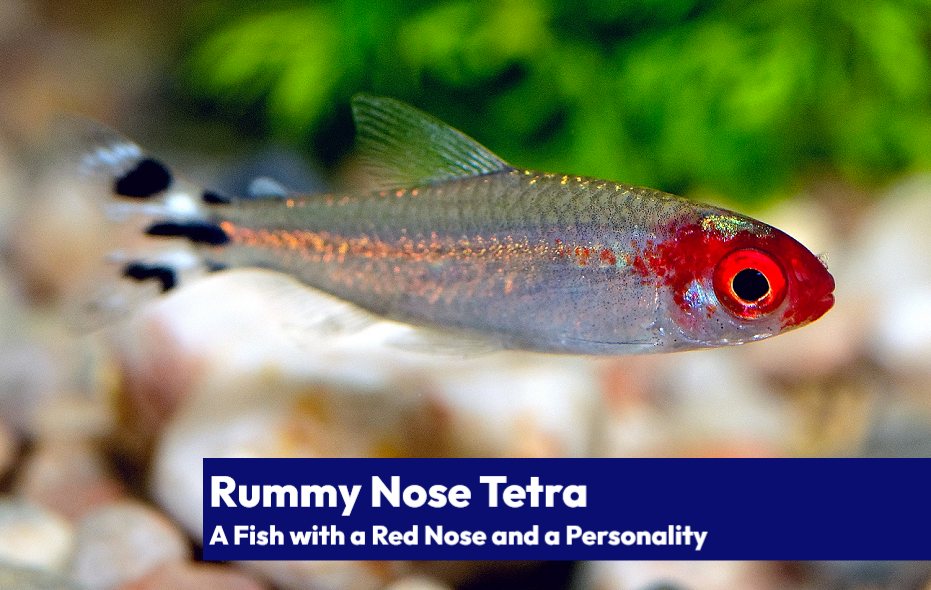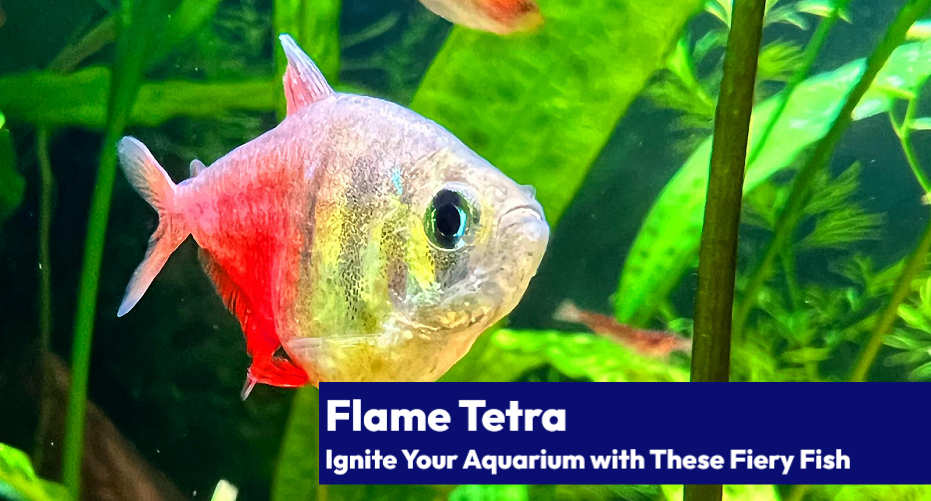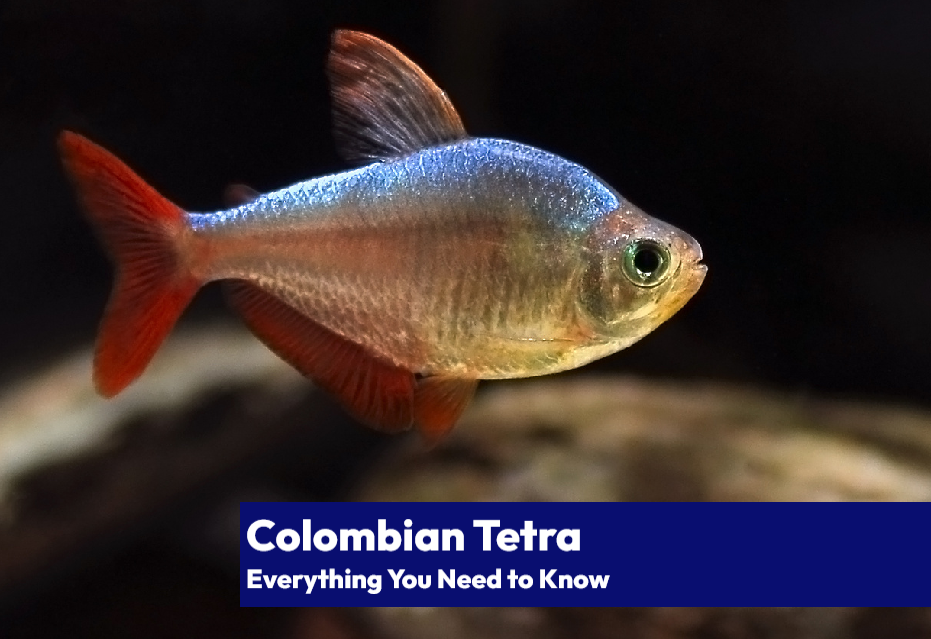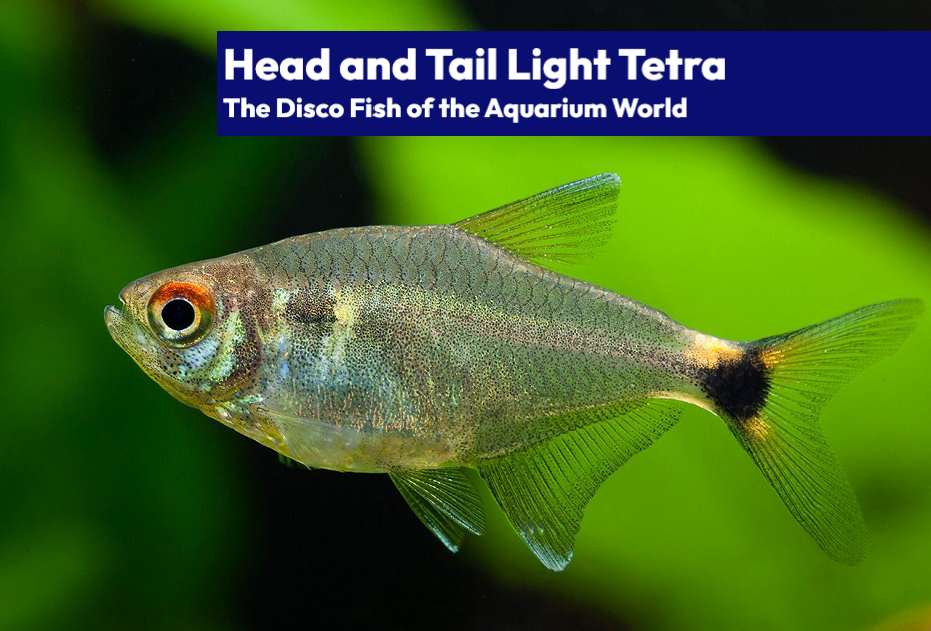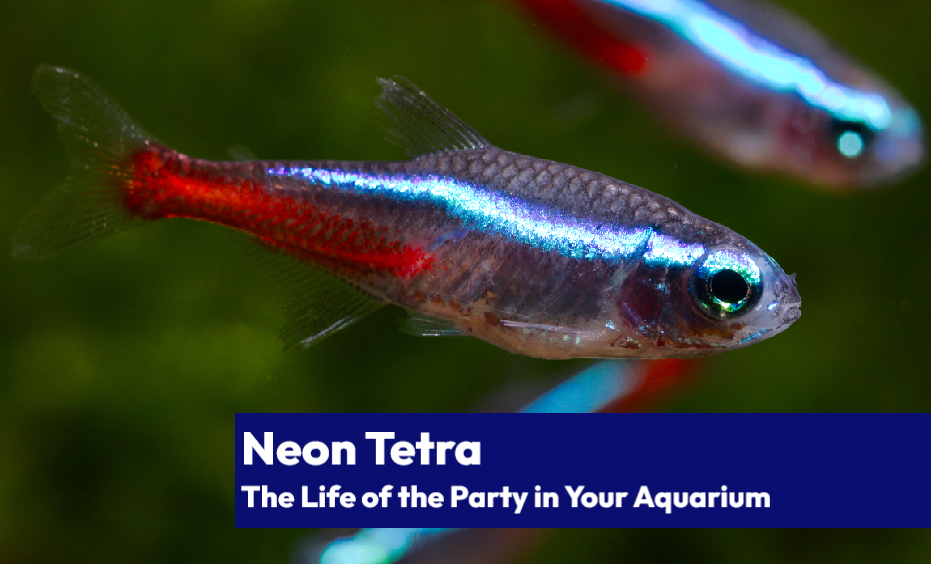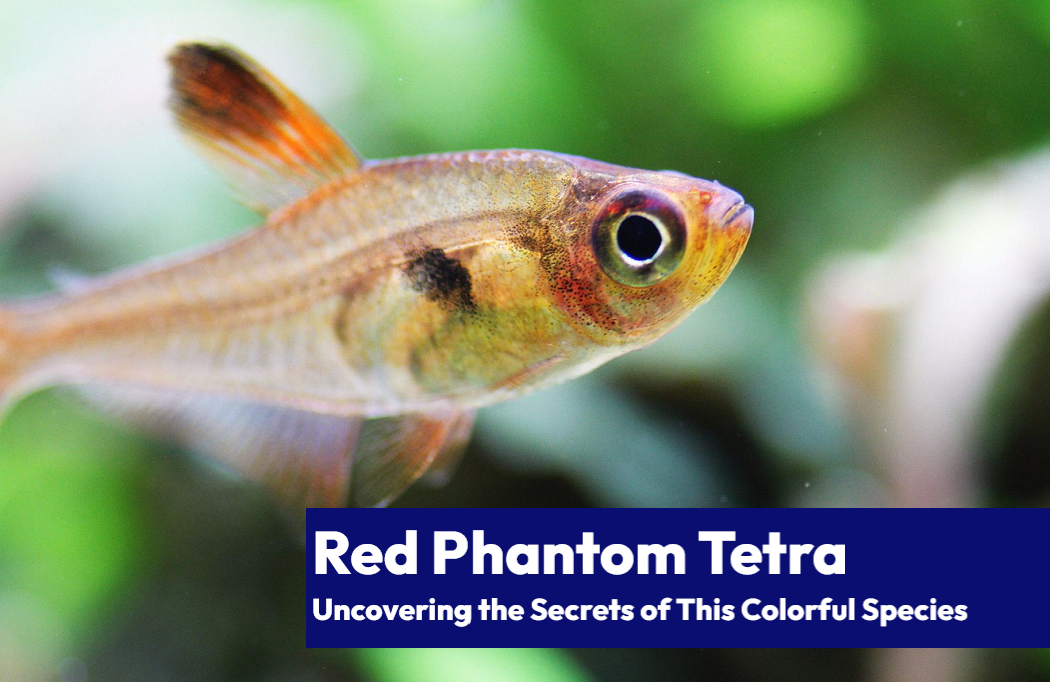Whoosh! 💨 What’s that zooming through your aquarium with a fiery red nose and a striking tail pattern? Why, it’s the Rummy Nose Tetra (Hemigrammus rhodostomus)! Come along as we embark on a colorful journey into the world of this fascinating fish and learn everything you need to know to keep them happy and healthy.
Let’s Talk Rummy Nose Tetras, Baby!
The Rummy Nose Tetra is a small, peaceful, and eye-catching freshwater fish that boasts a distinctive red nose, hence the name. They’re sociable, schooling fish that are perfect for beginners and experienced aquarists alike. To help you better understand these fabulous fish, let’s swim through some key care data:
| Care Data | Rummy Nose Tetra |
|---|---|
| Scientific Name | Hemigrammus rhodostomus |
| Type | Freshwater |
| Adult Size | 2 inches (5 cm) |
| Tank Size | 20 gallons (76 liters) |
| Optimal Temperature | 75-82°F (24-28°C) |
| General Hardness dGH | 2-12° |
| Carbonate Hardness dKH | 1-5° |
| Optimal pH range | 6.0-7.5 |
| Diet Type | Omnivore |
| Feeding Frequency | 2-3 times daily |
| Water Change Frequency | Weekly |
| Can Breed In Captivity? | Yes |
| Number of Fry | 80-100 |
| Spawning Type | Egg-scatterer |
| Native Range | South America |
| Temperament | Peaceful |
| Schooling/Shoaling Fish | Yes |
| Known to Jump Out of Tank | Rarely |
| Average Cost (USD) | $3-5 per fish |
Rudolph’s Cousin: Rummy Nose Tetra’s Appearance

One glance at a Rummy Nose Tetra, and you’ll instantly understand where they got their name. These little beauties have a vibrant red nose, contrasted by a silvery body and a black and white striped tail. They’re like little aquatic candy canes swimming around your tank!
Males and females are almost identical in appearance, but there’s a subtle difference. Males are slightly slimmer and have a more pointed dorsal fin, while females have a rounder body shape and a more rounded dorsal fin. It’s not the easiest task, but with a keen eye, you can tell them apart!
💡 Pro Tip: To differentiate between male and female Rummy Nose Tetras, look for the subtle differences in body shape and dorsal fin. Males have a slimmer body and a more pointed dorsal fin, while females have a rounder body and a more rounded dorsal fin.
Anatomy of a Rummy Nose Tetra
Rummy Nose Tetras have a compressed, elongated body that is typical of many schooling fish. Their mouths are small and upturned, which is perfect for nipping at food that floats on the water’s surface. Rummy Nose Tetras also have a single dorsal fin, a forked caudal fin, and an adipose fin – a tiny, fleshy fin between their dorsal and caudal fins. Who said small can’t be mighty? 💪
Their gills are quite sensitive, so it’s essential to maintain excellent water quality in their tank. Poor water quality can lead to stress and illness, which can have a snowball effect on their overall health. Remember, a happy Rummy Nose Tetra is a healthy Rummy Nose Tetra!
Rummy Nose Tetra Size and Growth Rate
The average size of a Rummy Nose Tetra is about 2 inches (5 cm) in length. These petite fish have a moderate growth rate, reaching their full adult size in about 6 to 8 months.
Rummy Nose Tetras’ growth can be influenced by factors such as water quality, diet, and tank conditions. Proper care will ensure that your Rummy Nose Tetras grow at a healthy rate and reach their full potential. 💪
The Long and Short of It: Rummy Nose Tetra Lifespan
The average lifespan of a Rummy Nose Tetra is 5 to 6 years. With proper care, some individuals may live up to 8 years. It’s essential to provide a well-maintained and stable environment to ensure your Rummy Nose Tetras live a long and happy life.

Tank Size: Room to Swim
Rummy Nose Tetras require a minimum tank size of 20 gallons (76 liters) to accommodate their schooling behavior and ensure they have enough space to swim freely. For a more comfortable living environment, consider a 29-gallon (110-liter) tank, especially if you plan to house a full school or include tankmates.
Water Parameters: The Ideal Conditions
Rummy Nose Tetras thrive in slightly acidic to neutral water with a pH range of 6.0 to 7.5. They prefer soft to moderately hard water, with a general hardness (dGH) of 2-12° and carbonate hardness (dKH) of 1-5°. Maintaining a stable temperature between 75-82°F (24-28°C) is crucial for their well-being.
Equipment Essentials: Creating the Perfect Environment
To create an ideal environment for your Rummy Nose Tetras, you’ll need a few essential pieces of equipment:
- Heater: A 100-watt heater is suitable for a 20-gallon tank, ensuring a stable temperature.
- Filter: A sponge filter is an excellent choice for these sensitive fish, providing gentle water flow and adequate filtration.
- Lighting: A full-spectrum LED light with a timer will simulate a natural day/night cycle and promote plant growth.
- Other essentials: Consider adding filter media like ceramic rings or bio-balls to enhance beneficial bacteria growth, and use a water conditioner to remove chlorine and other harmful chemicals from tap water.
Habitat Requirements: Home Sweet Home
Rummy Nose Tetras appreciate a soft, sandy substrate and plenty of hiding spots created by driftwood, rocks, and live plants. A dark-colored substrate will help their vibrant colors pop! Ideal plants for a Rummy Nose Tetra tank include Java Fern, Anubias, Amazon Sword, Cryptocoryne, and Vallisneria.
💡 Fun Fact: Rummy Nose Tetras’ vibrant red coloration serves as a visual indicator of their health. A more vivid red nose often means the fish is healthy and stress-free, while a paler color may indicate stress or illness.
A Feast for Fish: Rummy Nose Tetra Diet
Rummy Nose Tetras are omnivores and will happily snack on a variety of foods. Offer them a mix of high-quality flake or pellet food, along with live, frozen, or freeze-dried treats like:
- Daphnia
- Brine shrimp
- Bloodworms
- Tubifex worms
- Mysis shrimp
- Microworms
- Infusoria (to feed fry)
Feed your Rummy Nose Tetras 2 to 3 times a day, providing only as much food as they can consume in 2 to 3 minutes. Overfeeding can lead to water quality issues, so it’s essential to keep an eye on their feeding habits.
Behavior and Temperament: Peaceful and Active
Rummy Nose Tetras are peaceful and active fish, making them an excellent addition to a community tank. They enjoy swimming in tight schools, which is both entertaining to watch and a sign of their well-being. Rummy Nose Tetras are known for their unique “shimmy” behavior, where they rapidly vibrate their bodies, making them even more fun to observe.
These little fish are also known for their ability to change color in response to their environment, stress, or illness. It’s crucial to keep an eye on their coloration to ensure they remain happy and healthy in their tank.

Tankmates: The Good, the Bad, and the Ugly
Ideal tankmates for Rummy Nose Tetras include:
- Neon Tetras
- Ember Tetras
- Dwarf Gouramis
- Corydoras Catfish
- Otocinclus Catfish
- Guppies
- Platies
- Mollies
- Harlequin Rasboras
- Cherry Barbs
Avoid housing Rummy Nose Tetras with aggressive or much larger fish, such as:
- Cichlids
- Oscars
- Arowanas
- Jack Dempseys
- Redtail Catfish
Breeding: A Colorful Process
Breeding Rummy Nose Tetras can be a rewarding experience, though it requires a separate breeding tank with slightly warmer water (82-84°F/28-29°C) and a sponge filter for gentle water flow. Introducing live foods to their diet can encourage breeding behavior.
Once the eggs are laid, remove the adult fish to prevent them from eating the eggs. The eggs will hatch in about 24 hours, and the fry will become free-swimming in 3 to 4 days. Feed the fry infusoria or other small foods until they are large enough to accept crushed flake food or baby brine shrimp.
Diseases and Illnesses: Prevention is Key
Rummy Nose Tetras are susceptible to several common aquarium diseases, including:
- Ich (White Spot Disease)
- Fin rot
- Fungal infections
- Velvet Disease
- Bacterial infections
Maintaining excellent water quality and promptly addressing any signs of illness can help prevent disease outbreaks in your tank.
Origin and Native Range: Where it All Began
Rummy Nose Tetras are native to South America, primarily found in the Orinoco River basin and the Rio Negro and Amazon River basins in Brazil, Colombia, and Venezuela. They inhabit slow-moving, blackwater rivers with dense vegetation and acidic water conditions.
A Dash of Mystery: Rummy Nose Tetra Variants
There are three closely related species of Rummy Nose Tetras in the aquarium trade: Hemigrammus rhodostomus, Petitella georgiae (False Rummy Nose Tetra), and Hemigrammus bleheri (Red Nose Tetra). These species have subtle differences in appearance but share similar care requirements.
Taxonomy: Close Relatives and Classification
| Category | Name |
|---|---|
| Kingdom | Animalia |
| Phylum | Chordata |
| Class | Actinopterygii |
| Order | Characiformes |
| Family | Characidae |
| Genus | Hemigrammus |
| Species | Hemigrammus rhodostomus |
Wrapping up: Rummy Nose Tetra, A Colorful Journey
Rummy Nose Tetras are a fascinating and attractive addition to any community aquarium. By understanding their unique care requirements, appearance, and behavior, you can create a thriving environment for these captivating fish.
Now you know everything you need to know about Rummy Nose Tetras – from setting up the perfect tank to choosing the best tankmates. So, go forth and add some color to your aquarium! 🌈
TL;DR
- Peaceful, schooling fish with a red nose and distinct tail pattern
- Thrives in warm, acidic, and soft water
- Requires a planted tank and peaceful tankmates
- Omnivorous diet with a mix of high-quality flakes, live, and frozen foods
- Watch for common aquarium diseases and maintain water quality

Tim Priest, a renowned aquarium expert with over 15 years of experience in aquatic gardening and fish education, is dedicated to helping enthusiasts create stunning and thriving aquatic environments. As the founder of LearnTheAquarium.com, Tim shares his wealth of knowledge, passion, and expertise through engaging articles, educational resources, and personalized advice.
Discover the secrets to creating captivating underwater landscapes and maintaining healthy aquatic ecosystems. Join Tim on an exciting journey and let your aquarium adventure begin!
